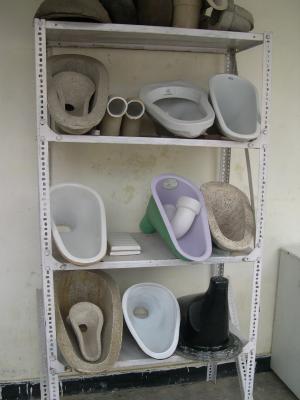Worldwide, traditional toilets are letting people down, with about 2.6 billion people using unsafe ones or defecating in the open.
Published on: 15/01/2014
Today, the Gates Foundation has invited the brightest innovators to 'reinvent the toilet'. The innovators taking on this task will present their proposals for solutions to the immense challenge of ending open defecation and reducing the health, developmental and environmental burdens that result from inadequate sanitation. It is certainly a challenge that merits urgent action. As the Gates Foundation says on its website: "Smart investments in sanitation can reduce disease, increase family incomes, keep girls in school, help preserve the environment, and enhance human dignity."
Millions of tons of excreta end up in our environment and cause diarrhoeal disease, killing 1.5 million children each year.
But, why do 4 out of 10 people still not have access to safe sanitation? Technology is part of the problem. For example in areas with high groundwater tables, where we currently have no low-cost sanitation technology that keeps faeces safely separated from human contact. And a big problem is that in the developing countries where people do have toilets, most rely on pit latrines or septic tanks, while there are insufficient options for safe disposal or treatment once these containers fill. Various types of toilets convert the pit contents into safe compost or even biogas, but in general the technology problem is that we focus exclusively on the toilet itself (containment of faeces).

Changing this situation requires overcoming a number of challenges, and three in particular.
1. We currently design and plan for the containment of faeces and not for transport, treatment and final disposal or productive use. These are crucial steps in ensuring that that untreated faeces do not end up in the environment.
2. There are a many reasons why existing technologies fail, with issues that are often related to the technology, but not (only) technical: the technology is unaffordable for the poorest, construction materials are not available, local workmanship is of low quality, etc.
3. To ensure that technologies are used, we need to understand what consumers want. It’s households who make the decision to invest in a toilet. The process of technology introduction, demand creation and hygiene behaviour change is a crucial factor in determining if the technology will be taken up.
Technologies do matter, but it takes a lot more…
In many countries, a range of sanitation technologies are piloted. Some work well and go to scale, while others break down or do not deliver the services they were intended to provide. There are very few standards for assessment and introduction of technology at local levels. To address this gap, the WASHTech project collaborated with national and local government, academic institutions, private sector enterprises, WASH agencies and donors in Burkina Faso, Ghana and Uganda to develop a simple participatory tool for assessing the potential of innovative WASH technologies and the performance of conventional technologies in a given context.
The technology assessment framework (TAF) examines key criteria, such as the performance of the technology, the market potential, whether the technology can be applied widely, support required from government and private sector institutions and sustainability of the technology over time.
We need innovators and creative thinkers to solve the sanitation challenge. And technology is one part of the puzzle. In addition to improving technology, we need to reflect on what we know already, understand what sanitation options people want and strengthen the enabling environment for sanitation services that last. This means investing in formative research and behaviour change, strengthening governance and accountability, and working on better supply chains - as well as in technology that is not only innovative, but also appropriate and sustainable.
At IRC we have strong opinions and we value honest and frank discussion, so you won't be surprised to hear that not all the opinions on this site represent our official policy.